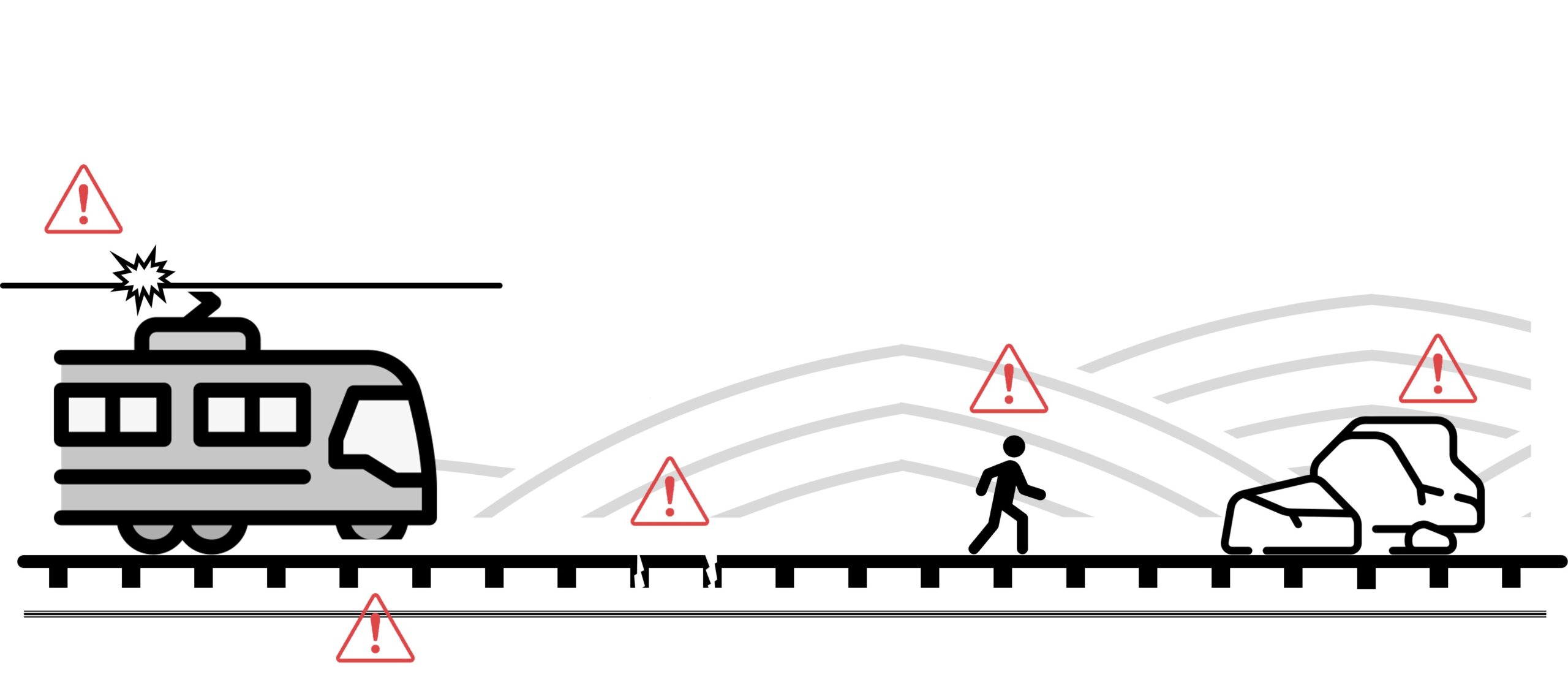Intrusion and theft detection system for railway tracks
This case study shows the capabilities of the DAS technology used on the telecommunication optical fibers already installed and in use by the railway operators.

Distributed Fiber Optic Sensing, or DFOS, is an innovative technology that is transforming the monitoring of railway infrastructures. The system converts the optical fibers laid alongside the tracks into a vast array of distributed sensors that allow real-time monitoring of the acoustic signals generated by different events along the railway lines. The condition of the tracks, rolling stock and important components of the railway can be monitored with unparalleled clarity thanks to DFOS.
The ability of the DFOS to identify and decode signals associated with a range of events, such as train movements, wheel-rail interactions and possible anomalies, is one of its main advantages. Thanks to its wide coverage, the distributed detection system provides comprehensive knowledge of the railway environment. By providing real-time information on train and infrastructure integrity, it enables proactive maintenance and reduces the risk of unforeseen failures. Thus, DFOS on railroads significantly improves safety and operations.
The ability of DFOS to maximize maintenance efforts significantly increases profitability. Operators can minimize unnecessary repairs and related expenses by focusing maintenance efforts where they are needed most, thanks to accurate information on the condition of infrastructure and trains. In addition, DFOS also accurately detects third-party aggressions to the track, whether of human nature (cable theft) or of natural origin (falling rocks on the track) that improve the safety of rail journeys.
Data-driven decision making is made possible by combining DFOS data with artificial intelligence and advanced analytical tools, which promotes a more responsive and intelligent railway infrastructure. Ultimately, DFOS stands out as a key technology that offers a proactive, effective and thoughtful response to the problems associated with today’s rail transportation.

Listen
The interrogation unit transforms the optical fiber into a sensor with thousands of microphones that constantly listens to what is going on around it.
Analyze
The processing unit analyses the information received and classifies it into the various basic events perfectly localized with an accuracy of several meters.
Report
The system groups the events and informs the user only of the alarms that are of interest to him according to his needs.
The acquired signals of the HDAS are traces that represent the strain variation along the optical fibre. We accumulate the traces in a waterfall plot, that allows us to analyse the vibration both in time and in space. We use digital image processing techniques in order to enhance the significative patterns of interest, and to reduce the noise.
Then, depending on the application, we apply a number of image analysis techniques using algorithms and mathematical models to detect and recognise patterns. For some use cases, we have developed supervised machine learning models, for other use cases “classic” algorithms give very good results.
